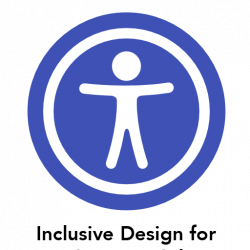Bullying and Eating Disorders
Listening to a client give an account of being called horrible names, being beat up in a bathroom or getting text or Facebook messages with degrading names, is the proof that we cannot talk about eating disorders and without discussing bullying. Yes, there are statistics about the frequency bullying and its correlation to eating disorders, but I do not do what I do because of the statistics, I do it because of the faces and the clients that describe the injuries that tear them apart.
What is Bullying?
One of the most important pieces to start with is to define bullying and the different types of bullying. According to stopbullying.gov bullying is defined as:
“Unwanted, aggressive behavior among school aged children that involves a real or perceived power imbalance. The behavior is repeated, or has the potential to be repeated, over time. Both kids who are bullied and who bully others may have serious, lasting problems.”
When Does Bullying Occur?
Bullying can happen at any age, but often we think about it during school age, kindergarten through 12th grade. However, it is important to remember that bullying can occur in college. Bullying can occur in a variety of forms including, verbal, physical, emotional and cyber bullying. In today’s world of social media and technology, cyber bullying is more and more common. Cyber bullying can occur via Facebook, Instagram, text messages, snap chat, the list goes on.
Effects of Bullying
One thing that differentiates bullying is the repeated behavior or potential for its repetition. Often clients describe bullying that occurs over the course of a few years. In a study completed by UK Charity Beat, 195 people completed an online study about bullying and eating disorders, 51.7% of people reported that the abuse went on for over 4 years.
Collecting a detailed history, which includes both past bullying experiences and if the bullying is still occurring, is vital to an individual’s treatment planning. If there is a history of bullying, the clinician and client can work together to identify the impact the bullying has had on the individual and their eating disorder. This may include exploring messages the client received and how they interpreted these messages. For example, if a client has heard from a bully that they are fat, the client may form the core belief “If I’m skinny, then I won’t be bullied.”
If the bullying is still going on, then the clinician and the client’s first goal is to work together to start to create safety for the client. It would be tricky to do therapy to try to revise beliefs, like the one above, if the client leaves your office and hears the same thing the next day. The clinician and client can work together to identify ways in which the client can create safety and identify resources at school or home that may help the client to create this safety.
Bullying and Eating Disorders
In the above-mentioned study by UK Charity Beat, 86% of participants reported that bullying had contributed to their eating disorder. Individuals with eating disorders often describe the impact of bullying on their body image, self-esteem and confidence. Clients will often report turning to their eating disorder as a way of either changing themselves, in hopes that it will make the bullying end, or as a way to emotionally numb out from the pain of the bullying. This is one of the reasons it is critical that clinicians complete a thorough history, specifically around bullying, because of what was said or done during that time can often be directly related to the client’s eating disorder. This is not to say that bullying is the only contributing factor to eating disorders, but it can be a significant contributing factor for individuals.
Clinician Support
Take a Thorough History: This includes a bullying history. Get the specific details of what they experienced. This will often help in the treatment process, specifically often understanding core beliefs individuals may have about themselves or their bodies. Also, make sure to ask about if there are times that the client was the one doing the bullying.
Talk to the Family: Whether or not you are working with an individual under 18, it can be very helpful to get history from family members, specifically parents or guardians. This will also provide you with information about how the bullying was handled.
Discuss Social Media Usage: How do they use is it? If they are experiencing cyber bullying, work with client about how to create safety while continuing to use social media or maybe support in temporarily deleting apps from their phones. Talk through the options the client has in regards to creating safety and setting boundaries with social media.
How to Support a Bullied Loved Ones:
Don’t Minimize Bullying: No matter what your loved one is reporting about bullying, if they are courageous enough to talk about it and ask for help then LISTEN. This is one of the most healing and validating support you can provide your loved one.
Enlist Help: If this is a friend, get a trusted adult involved immediately. As a parent, talk to teachers, counselors, coaches, whoever might be able to intervene and start to educate and support kids.
Talk about Bullying before it Happens: When bullying happens, there are often kids that witness it or maybe you are related to the individual doing the bullying. The more that open communication is the norm, the easier it will be to have these difficult conversations.
Professional help is available and healing from bullying and eating disorders is possible. Call today to learn more about the programs we offer.
Our Recommended Articles
Start the road to recovery with Alsana.






